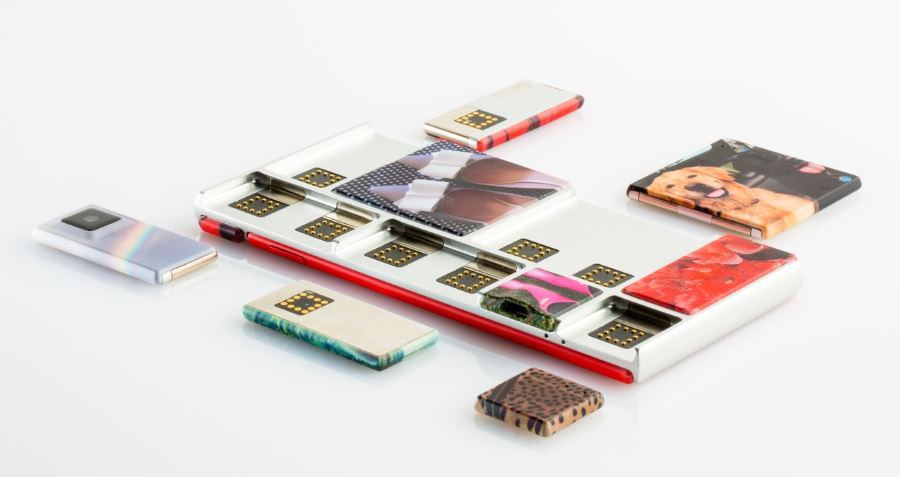Project Ara: the latest news on the modular google smartphone

Today, Google, represented by Paul Eremenko, presented a number of updates on the modular smartphone Project Ara. In particular, the situation has now become clear with what will be the commercial version of the device, and where you can wait for the device to appear on sale.
In addition, the company presented a roadmap for the further development of the project. As far as one can understand, Project Ara has already ceased to be just a concept, a toy, and is gradually turning into a very real device, which some journalists even managed to hold in their hands.
Currently, the project team is working on a prototype , called Spiral 2. Here you can see several antennas to improve signal reception, improved power consumption, unification of modules.
')

Spiral 2 still has some problems with signal degradation, as well as minor problems with mounting modules. In order to avoid abrasion of parts of the modules, developers will place components at intervals of 150 microns. All improvements will be implemented in the version of Spiral 3.

Project Ara Road Map
Most of the company's plans have been implemented since 2013, and the project is entering the final stretch.

Spiral 3 will work with the Rockchip hardware platform , while providing an updated version of the SDK for developers. The smartphone will be able to work in networks of LTE 4G.
At this stage, the project team has already created 11 main modules for the smartphone. By the end of 2015, the number of components will increase to 30. The main unit is the Nvidia Tegra K1 with the Marvell PXA1928 chip, plus a display with a resolution of 1280 * 720 pixels (display sizes are not called). The developers also offer a camera module with a 5 MP matrix, a battery module, various communication modules (including 3G, WiFi, Bluetooth) and a module with a micro USB port. The module-detector of air pollution will also be available (although the functionality of the module is also not disclosed). It can be assumed that this module will determine the concentration of carbon monoxide (carbon monoxide), the concentration of carbon dioxide and some other compounds.
The project team also plans to create a deployed ecosystem for the device, including individual applications and modules. Thus, the smartphone will be able to offer its users extensive functionality and capabilities.
Where can one buy?
The device will go on sale first in Puerto Rico . The developers explain this choice by the fact that there is a sufficiently deployed cellular network infrastructure in this country, plus you will not have to go through complex device certification procedures (all procedures will be followed later in order to launch sales in the USA and Europe).
The device will be sold from two operators with support for 4G LTE (operators Open Mobile and Claro). At the same time, it will be possible to buy the device not in stationary stores, but at mobile points of sale, which will be installed in various places throughout the country. The points will be equipped with sublimation and 3D printers, so that the buyer can customize the device and modules to it (if desired by the buyer).























Source: https://habr.com/ru/post/375495/
All Articles